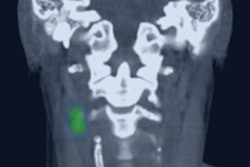The National Cancer Institute (NCI) has awarded the University of Texas Southwestern (UT Southwestern) a $1 million planning grant to develop research proposals for the first heavy ion radiation therapy research center in the U.S.
UT Southwestern Medical Center in Dallas is leading a Texas consortium of researchers to establish the country's first National Center for Heavy Ion Radiation Therapy that could provide clinical care and research using heavy particles for innovative new cancer treatments.
In the U.S., most cancer patients are currently treated using energetic photons, electrons, or protons, but the proposed center could house cancer research and care by heavy particle treatments. Heavy ion radiation therapy can treat tumors that do not respond to other types of radiation and better spares healthy tissue, which is important when treating sensitive areas such as the spine and brain.
"Heavy ion radiation therapy represents the next quantum leap forward in cancer care. It is not available in the U.S., and our location would be the first of its kind in the country," stated Hak Choy, MD, chair and professor of radiation oncology at UT Southwestern and a principal investigator for the award.
Heavy ion radiation therapy was pioneered in the U.S. by researchers at the Lawrence Berkeley National Laboratory, but a lack of funding stopped that research in the early 1990s. Currently, eight heavy ion radiation therapy centers are fully operational worldwide, with an additional 10 centers in development.
"The efficacy of heavy ion radiation therapy for certain cancers has already been established by foreign institutions, which have conducted clinical trials and found profound increases in overall disease-free survival," Dr. Choy said. "Heavy ion radiation ... delivers therapy that is both more potent and more precise than conventional as well as proton therapy."
The center would cost an estimated $200 to $250 million to build and is targeted for completion in 2021, and it would require a combination of federal, state, and private funding for construction and ongoing research.


















